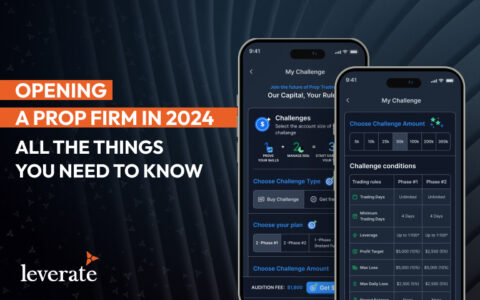The “Customer Journey” is becoming an increasingly popular term to describe how clients and companies interact. The term refers to the entire experience, from the very early stages of the customer’s research, through to how they make their purchase decision, and eventually concluding this process with feedback and follow-up.
Through the process, this interaction can be mapped, diagramed, optimized and managed. Yet surprisingly, despite the technology being available, many companies haven’t yet approached the customer’s journey as methodically as they could.
“The benefit of mapping the customer’s journey is that it gives a company the necessary data with which to achieve continuous improvement and ultimately increase the client’s lifetime value”, says Benny Ashkenazi, Head of Marketing at Leverate, a leading brokerage technology and services provider. “If a customer endures a frustrating experience where there are failed expectations or uncertainty in the process, the chance of them abandoning a purchase, is unsurprisingly quite high. In contrast, a customer who follows a process through to completion, will typically have a positive experience where expectations were met”.
The challenge for companies is that there are no two distinct paths, one for success and the other for failure. “As the saying goes, ‘There are many ways to crack an egg’. Companies need to identify the methods that work, and improve on the ones that don’t”, advises Mr. Ashkenazi.
The journey needs to be strategized in light of identified customer needs and wants and then gradually serve and address those demands. Yet the journey also encompasses the stages that go beyond actual purchase, to include the customer’s research, and their likeliness to provide a recommendation or even advocate on behalf of the company.
We are living in a unique consumer generation, where it’s unprecedented that companies are even able to analyze this degree of interaction. Unlike previous decades, today’s consumers are experiencing almost all of their interactions over digital platforms such as the mobile and web, where interactions can be tracked, recorded and analyzed. Self-directed, digitally savvy interactions may be a convenience to customers, but it is a gold mine for companies.
New tools on the market that provide customer analytics have incorporated journey mapping into their insights and dashboard displays, as they realize that service organizations need to understand how their processes work and actually impact customer decisions.
Marketers have already been on to this “golden data” for some time already, where they have been trying to glean results that help them understand what works in the customer journey and what doesn’t. The only difference is that marketers are analyzing from the opposite point of view, where they are trying to design pathways based on anticipation, while customer service staff analyze results based on what has already happened. It’s the difference between looking through the windscreen and looking through the rear view mirror.
A service orientation means that your focus is going to be on those bumps on the road where interactions have become inefficient and deteriorated. However, a marketing orientation means that you’re interested in channeling customers into specific journeys that you expect will result in a specific revenue-generating outcome. [more_in]
Due to this enormous potential to improve customers acquisition, conversion and retention, more and more companies are looking into journey mapping. It is a reliable method of insight-gaining, that will help you ensure that a one off glowing customer report, will be your new standard outcome.




